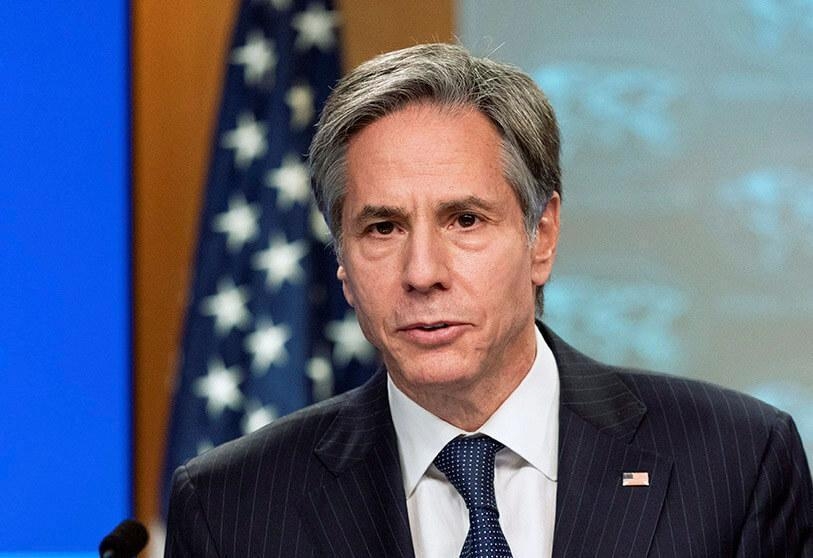US Secretary of State Antony Blinken has stated that now is “probably the best, maybe the last opportunity” to secure a ceasefire and hostage release deal in Gaza.
Blinken made these comments during a meeting with Israeli President Isaac Herzog on Monday, marking his ninth visit to the region since the war began in October.
The US has shown optimism about a potential deal since talks resumed in Doha last week. However, Hamas has described suggestions of progress as an “illusion,” citing disagreements, including whether Israeli troops will be required to fully withdraw from Gaza, as Hamas demands.
Blinken is also expected to press Israeli Prime Minister Benjamin Netanyahu on these issues during their meeting later on Monday.
“We’re working to make sure that there is no escalation, that there are no provocations, that there are no actions that in any way could move us away from getting this deal over the line, or, for that matter, escalating the conflict to other places, and to greater intensity,” Mr Blinken said during his meeting with Mr Herzog.
“This is my ninth visit since October 7, to Israel, to the Middle East, and this is a decisive moment, probably the best, maybe the last opportunity to get the hostages home, to get a ceasefire and to put everyone on a better path to enduring peace and security.”
The current negotiations are centered around a revised proposal from the US, designed to address long-standing disagreements between Israel and Hamas. The US hopes to finalize the deal possibly by this time next week.
However, both Israeli leaders and Hamas have expressed skepticism. Each side accuses the other of obstructive behavior and blocking progress.
Hamas has accused Israeli Prime Minister Benjamin Netanyahu of creating “obstacles” and “setting new conditions and demands” to “prolong the war,” holding him “fully responsible” for hindering the mediators’ efforts.
A Hamas source previously indicated that the proposals involve the Israeli Defense Forces (IDF) maintaining a reduced presence along the Philadelphi Corridor, a strip of land along Gaza’s southern border with Egypt.
However, Israeli sources have suggested that other measures along the border could counterbalance an Israeli withdrawal from this area in the initial phase of the deal.
The Israeli military launched its campaign in Gaza to dismantle Hamas in response to a major attack on southern Israel on October 7, which resulted in about 1,200 deaths and 251 hostages.
Since then, more than 40,000 people have reportedly died in Gaza, according to Hamas-run health ministry figures.
A ceasefire agreement reached in November led to Hamas releasing 105 hostages in exchange for a week-long ceasefire and the release of approximately 240 Palestinian prisoners.
Israel claims that 111 hostages are still held, with 39 presumed dead.
Earlier this week, US President Joe Biden said “we are closer than we have ever been” to a deal.
But previous optimism expressed during months of on-off talks has proven unfounded.
Mr Netanyahu told a cabinet meeting on Sunday that complex negotiations were taking place to secure the return of hostages, but some principles needed to be upheld for Israel’s security.
“There are things we can be flexible about, and there are things we cannot be flexible about, and we insist on them. We know very well how to differentiate between the two,” he said.
He also accused Hamas of being “obstinate” in negotiations and called for increased pressure on the militant group.
A senior Hamas official told the BBC on Saturday: “What we have received from the mediators is very disappointing. There has been no progress.”
While these public statements may be a negotiating tactic, the deep-seated enmity and distrust between the parties make a breakthrough within a week seem highly optimistic.
Additionally, the timing of US pressure is influenced by Washington’s electoral politics, with the sense that the countdown for a deal is accelerating for the Americans compared to the two negotiating sides.
The original deal proposed by President Biden, based on Israel’s plan from May 27, was structured in three phases:
- The first would include a “full and complete ceasefire” lasting six weeks, the withdrawal of Israeli forces from all populated areas of Gaza, and the exchange of some of the hostages – including women, the elderly and the sick or wounded – for Palestinian prisoners held in Israel.
- The second phase would involve the release of all other living hostages and a “permanent end to hostilities”.
- The third would see the start of a major reconstruction plan for Gaza and the return of dead hostages’ remains.
Meanwhile, the Hamas-run health authority in Gaza says Israeli air strikes killed at least 21 people including six children on Sunday.
The IDF said on Sunday it had destroyed rocket launchers used to hit Israel from the southern Gaza city of Khan Younis, the scene of intense fighting in recent weeks, and killed 20 Palestinians.



